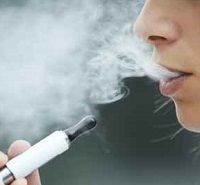We Still Do Not Know That Much about the Health Effects of E-Cigarettes and Vaping
In 2010, about 3% of Americans had tried e-cigarettes. Today, around 10% of the population has tried them, with sales growing every year.

The operative word in the term “electronic cigarette” (ECIG) is electronic. Like all electronic devices, these gizmos change constantly. Today’s ECIG is much more refined than the prototype that was only introduced 12 years ago. In 2010, about 3% of Americans had tried ECIGs. Today, around 10% of the population has tried them, a statistic reflected in sales volume. According to the Wall Street Journal, ECIG sales in the US exploded from $113 million in 2011 to $722 million in 2013.
The journal Preventive Medicine, acknowledging that ECIGs are here to stay—and that many physicians sometimes consider using them to help patients quit smoking—has published a thorough review of the burgeoning science associated with ECIGs.
ECIGs heat a liquid solution into an aerosol or vapor that the user inhales. Different brands’ engineering characteristics and physical appearances differ, as do their liquid storage and vaporization processes, nicotine concentrations, propylene glycol and/or vegetable glycerin proportions, and flavorants. Early ECIGS delivered nicotine to the user in quantities that were quite low or inconsistent, leading to creation of newer ECIGs that deliver higher doses of nicotine reliably.
Users report that ECIGs deliver a stronger “throat hit,” with enduring effects at prices very close to what they pay for cigarettes.
Researchers have examined aerosol toxicant yield, user puffing behavior, physiological effects, subjective effects, and abuse liability. Most research has been conducted with a limited variety of ECIG products that over represent early-generation ECIGs.
Do ECIGs help smokers quit? Only 2 large studies have been completed, and their results are disappointing. ECIGs seem to help small numbers of smokers quit, but they are no better than nicotine replacement products. And, the studies used the older, less reliable ECIG models.
ECIGs pose a risk. They may introduce people who might otherwise stay nicotine-free to this addictive substance, and some ex-smokers have been drawn to them and resumed their nicotine addiction.
ECIG’s potential adverse health outcomes due to inhalation of the liquid and aerosol constituents are unclear. Like cigarettes, possible damage is related to smoker behaviors including depth of inhalation and number of ECIGs per day.
How ECIGs compare to traditional tobacco models is unclear, as are their implications for individual and public health. A large concern is their use by member of vulnerable populations.